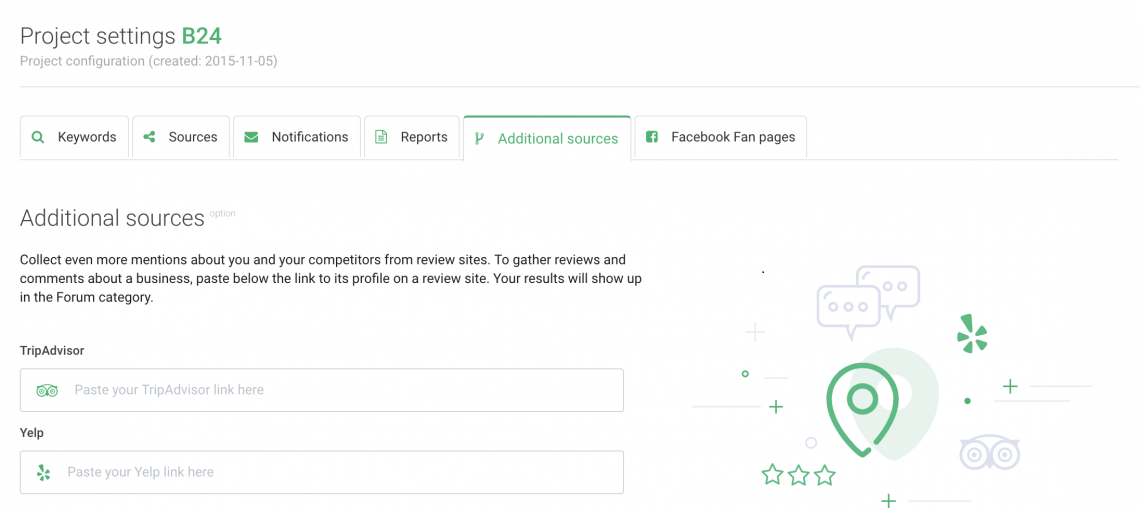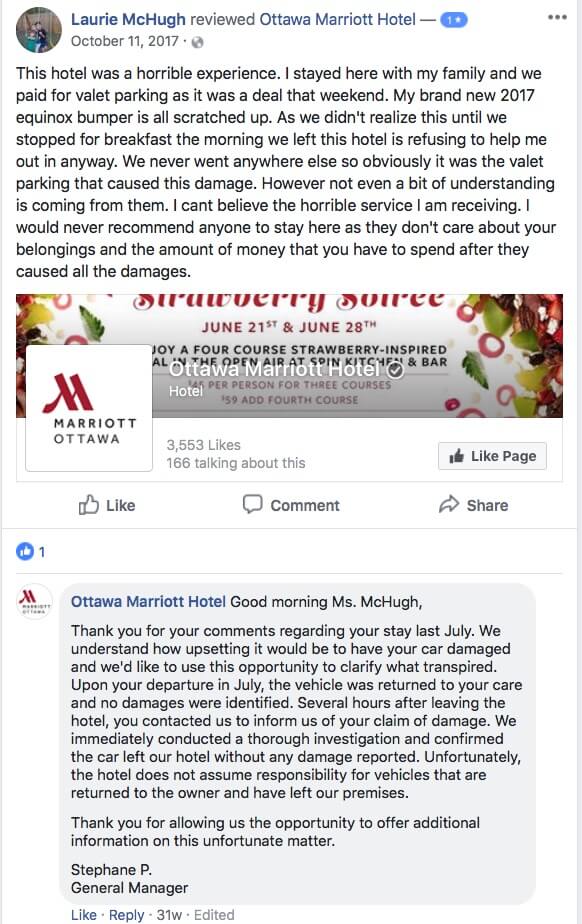Bad Reviews and What to Do About Them
Table of contents
Can you remember the last time you went to a restaurant without checking the reviews? Neither can I! What made you choose one place over the other? I bet bad reviews were among the ranking factors!
Honestly, whenever I want to visit a place that I haven’t been to before, I straight up go to their Facebook page to check out other people’s experiences.
Guess I am not the only one doing so! Following an amazing report from Bright Local, 86% of consumers read online reviews for businesses. That’s A LOT.
To make it even more interesting, 57% won’t even use a business that has fewer than four stars. That’s how important online reviews are to us when choosing a place we want to purchase from.
I mentioned restaurants, but the same goes for hotels, cafes, etc. Obviously, it’s not just HORECA that has to deal with negative reviews!
Bad reviews happen to all of us
If you’re a business owner, bad reviews will eventually come after you and you have to embrace that. Not everyone has to like you, and even if you do your best, there will always be people that will find a reason to complain about. As a football fan, this brings one of Cristiano Ronaldo quotes to mind, this one, specifically:
Not even God can please everyone.
Obvious? Yes, and true, at the same time. It doesn’t mean that you should ignore bad reviews, though.
In fact, you should do the opposite! And you might even use them to your advantage. Let me tell you how!
A social media monitoring tool is your best friend
I get it, you own your social media profiles and you think that’s enough to know about all reviews you get.
It’s not.
A report from Conversocial claims that only 3% of tweets tag the brands that people reach out to for help. This means 97% just type the business names without their Twitter handle. That’s massive!
What does it mean for you? You won’t get a notification, ergo you might miss out on a bad review that could cause harm to your business.
Even though those scary numbers reflect Twitter data only, I believe it happens on other platforms as well.
That’s where social media monitoring tools come into play. What’s so cool about them is the fact that they collect mentions of your keyword in all forms, whether it’s a hashtag, @socialmediahandle, or a URL.
As a consequence, you have all mentions of your business in a single dashboard without the need to juggle notification tabs across different social media a few times a day.
Have a look at our list of the 12 best social media monitoring tools in case it’s a new topic for you or you simply can’t figure out which would be the right fit for you.
What I think is a pretty cool thing when it comes to Brand24 specifically is that you can add Yelp and Trip Advisor as additional sources that you’re going to collect mentions from.

Forget about ignoring bad reviews
Some people are merciless when it comes to criticism. Still, even in the toughest cases, don’t pretend that nothing happened. Ignoring a negative review won’t make matters any better for you. In fact, you can only go downhill from there.
I know you won’t always be able to reply to those reviews instantly, but the sooner you do it, the better!
This video shares some good tips to help you deal with bad reviews — the smart way:
Don’t let your emotions take you over.
Even if you completely disagree with the author of a review and feel like the way he described your business is completely unfair, take some time to cool down if needed. You want to be professional and anger won’t help with that.
Once you’re ready, be empathetic.
Let them know you acknowledged their complaint and are sorry for the way they felt. Give them an explanation of what happened and apologise. You can also offer a discount or something as compensation on their next purchase.
I think it’s a good idea to always reply publicly.
Other people will see the bad review first, but if they see you responded to it straight below, it gives the impression that you really care for your customers.
Unfortunately, sometimes, a public apology won’t be enough to make amends to an enraged customer. In such instances, the best thing you can do is take the conversation to the direct messages. You don’t need other people to see both parties endlessly sending messages back and forth, but this way it also should be easier to explain a problem in details.
Also, it can happen that a consumer will try to take advantage of you, blaming your business for something that was never your fault. Here’s an example I found on Neil Patel’s blog:

Ottawa Marriott Hotel replied in a super professional manner. They didn’t try to argue with a customer as that wouldn’t lead to anything good. Instead, they chose to describe what actually happened and even though there’s no evidence attached to it, it reads so good as if there was a video clip from their parking’s CCTV attached to it.
Bad reviews are good
It’s not as crazy as it initially sounds. In fact, bad reviews add authenticity to your business. Of course, we don’t want too many of them, but it seems like having a few make us more trustworthy. Having 5-star reviews only looks a tad suspicious, doesn’t it?
Even TechCrunch says you don’t need a 5-star review. The ratings that work best and influence product purchases the most are somewhere between 4.2-4.5.
Those bad reviews are also opportunities you can capitalize on by showcasing stellar customer service. As long as you follow the tips I provided above, reply promptly and let people feel that you truly feel sorry for what caused them to write a negative review, it should be easier to convince them to give you a second chance.
On top of that, it’s going to look crazy good in the eyes of people that are going to read your reviews in the future.
Bad reviews also humanize your brand.
We’re not perfect as people and no business is perfect as well. If you act like yours is and it’s never your fault that something bad happened, fight with the bad reviews, or even worse, hide them, you’re going to drive people away.
Another good thing here is that you’re getting valuable customer feedback. As long as it’s constructive criticism we’re talking about, you’re going to find ways to make your product or service better. Sure, you don’t need or even shouldn’t implement everything people want you to, but some of their ideas could push your business forward.
Negative Review Response Examples
01 E-Commerce:
Customer Review: “The product I received was defective. The quality control for this company seems to be nonexistent.”
Response: “Dear [Customer’s Name], we sincerely apologize for the inconvenience you have experienced. We strive to provide high-quality products and are disappointed to hear that you received a defective item. We have a stringent quality control process, and it’s concerning that this issue has occurred. We appreciate you bringing this to our attention. Our customer service team will reach out to you to resolve this issue promptly. Thank you for your patience and understanding.”
02 Fintech:
Customer Review: “Their mobile app is full of bugs and crashes often. It’s a nightmare to use.”
Response: “Hello [Customer’s Name], we’re very sorry to hear about your negative experience with our mobile app. Our tech team is continuously working on improving the app’s stability and usability. We would greatly appreciate it if you could provide more specific details about the issues you faced, to help us pinpoint and rectify the problem. Please contact our support team directly at [support email]. Your patience and help in improving our services are much appreciated.”
03 SaaS:
Customer Review: “The platform is not as user-friendly as they claim. I had a hard time navigating it.”
Response: “Hi [Customer’s Name], we regret to hear about your difficulties navigating our platform. We aim to make our software as user-friendly as possible, and we appreciate your feedback. We’d like to assist you better and offer some helpful resources. Our customer success team will contact you to provide a walkthrough and answer any questions you might have. Additionally, we will consider your feedback in our ongoing efforts to improve the user experience. Thank you for your valuable input.”
04 NGOs:
Customer Review: “Their response times are incredibly slow. It feels like they don’t value their donors.”
Response: “Dear [Customer’s Name], we are sorry to hear about your experience and appreciate you bringing this issue to our attention. We highly value our donors and apologize if our response time has given a different impression. Our team is actively working to improve our communication efficiency. Meanwhile, please feel free to reach out directly to our donor services team at [contact details], who will assist you promptly. We thank you for your support and patience.”
These response examples aim to address the customer’s concerns, offer a solution, and show other potential customers that the business takes feedback seriously and strives to improve.
Wrapping up
As I have mentioned before, as a business owner, you’re going to face negative reviews sooner or later. I know it feels as if somebody was attacking your baby, but trust me, it’s not the end of the world!
Even if a bad review is a result of a major fuck up on your side, there’s always a way to put out a fire. Once it goes public, the ball is in your court and it’s all down to your approach. You can be tactful and apologetic, or act ignorant and disrespectful. It’s pretty obvious what’s beneficial for you. After all, it’s money that is at stake here!
FAQ
What does a bad review do?
A bad review can have significant implications for businesses and their customer relations. Often perceived as an embodiment of negative feedback, a bad review communicates a customer’s dissatisfaction with a product, service, or overall experience. It amplifies customer complaints, making them publicly visible, particularly on review sites, which are frequently consulted by potential customers.
As such, negative reviews could directly affect a business’s reputation and its ability to attract new patrons. Not all negative reviews are bad – besides deterring potential customers, bad reviews can also inform business strategies, shedding light on areas of improvement and service gaps that may have previously been overlooked. In essence, while they are damaging, they can also serve as a catalyst for change and improvement within an organization leading to better customer satisfaction.
How do I leave a negative review?
If you’ve had an unpleasant experience, be it due to subpar customer service or dissatisfaction with a product or service, leaving a negative review provides a way to voice your concerns. To do this, visit the relevant review site and detail your experience objectively and honestly.
Your description should include both your overall impression and specific events or interactions that led to your dissatisfaction. This transparency, although resulting in negative customer reviews, is critical as it alerts both the company and potential consumers to potential issues. While positive reviews contribute to a business’s image, a balanced perspective provided by negative reviews can be equally beneficial for potential customers in the decision-making process.
What can you say in a negative review?
In a negative review, focus on your personal experience, mentioning instances of poor customer service or any factors that contributed to your negative experience. If there were specific interactions, conversations, or incidents that left you dissatisfied, include these in your review.
Additionally, talk about the product or service you received. Was it up to the standard you expected? Did it fail to meet advertised promises? Including these details makes your review more informative and valuable to both the company and potential customers. Remember, your review should provide constructive criticism and encourage improvement rather than simply venting frustrations.
Do people read negative reviews?
Indeed, people do read negative reviews. It’s a common practice among customers to investigate a product or service thoroughly before making a purchasing decision, and this includes perusing negative reviews.
Consumers understand that no business is perfect and they expect businesses to have a mix of positive and negative reviews. Negative reviews can reveal potential deal-breakers or consistent issues that could affect a customer’s experience. This is the main reason you should respond to negative reviews – customers expect businesses to do that.
How do you respond to a negative review that is false?
Responding to a false negative review requires a considerate and measured approach. It’s vital first to verify the claim made in the review. Even if the review is false, it’s essential to respond professionally on review sites.
A well-crafted response should address the concerns raised in the review, correct inaccuracies, and present facts to counter false claims. This approach shows potential customers that your business is proactive, willing to engage with all feedback, and committed to resolving customer concerns. It’s crucial not to let false negative reviews go unaddressed as they can affect your business’s reputation among potential customers and can lead to more negative reviews.
Relevant reads
Online reputation management in-and-out + 10 Pieces of Best Reputation Management Software
The Best AI Sentiment Analysis Tools
Related articles
Top Reads
Brand Monitoring: Tools & Guide for 2026
Brand Awareness Strategy [The Ultimate Guide for 2026]
The Best AI Hashtag Tracker and Other Hashtag Tracking Tools [2026]
Social Media Reach: How to Measure & Improve It in 2026?
X (Twitter) Analytics Tools: The 10 Best to Try in 2026
Sentiment Analysis: What is it & Why do You Need it in 2026?
Share of Voice: Definition, Calculation, Tools [2026 Guide]
Brand Reputation Management: 6 Expert Tips for 2026
A Complete Guide to AI Social Media Analysis [2025]
How to See How Many Times a Hashtag Was Used on X (Twitter)
Start Social Listening!
Get the Brand24 trial and start social listening like a PRO.



